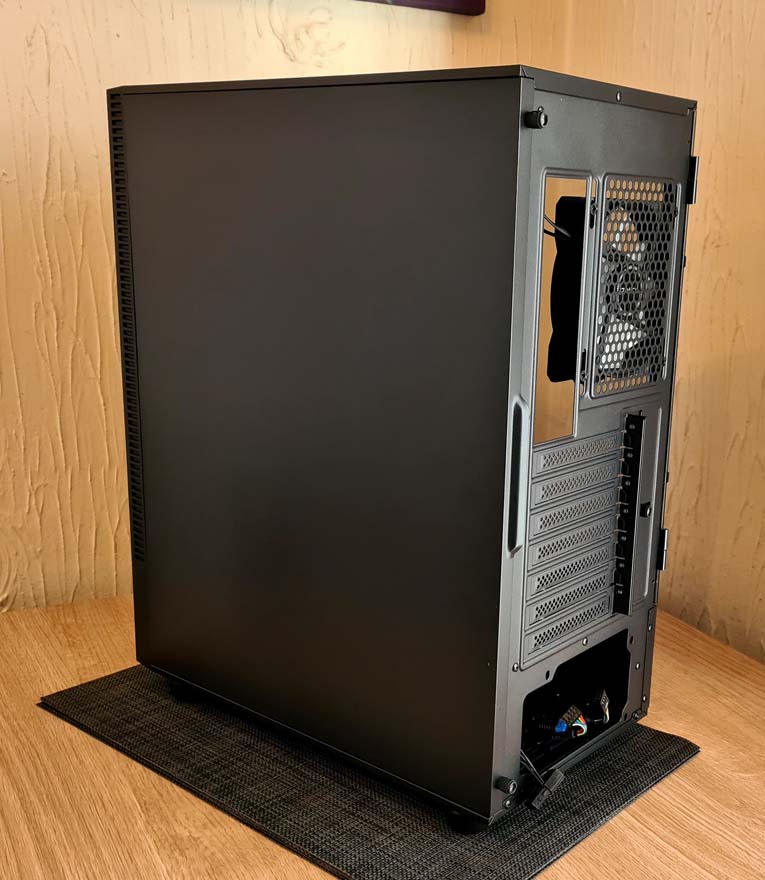Antec NX410 Mid-Tower Case Review
Peter Donnell / 4 years ago
Exterior
The Antec NX410 is a pretty fantastic looking PC case. Sure, it’s not exactly expensive, but I’m seeing everything here that I would expect on models that cost double, if not triple the price. There’s a large tempered glass window down the left side.

Plus, it has this funky little handle to open it up, and there’s a nice trim around the edge, which hides all the boring frame and fittings; it just looks neater.

There’s a built-in PSU shroud, and the glass stops about 3/4 the way down the case, but I quite like the look of that, it works rather well.

Towards the front, you’ll find a full mesh design, allowing for maximum airflow, while also providing a rudimentary air filtering system of its own. As you can see, this also stops a bit short of the bottom, matching up with the side panel design. Plus, there’s a tasteful Antec logo in the middle.

Down the right side, it’s just one big solid panel, which can be removed via two thumbscrews at the back; standard stuff, but it gets the job done.

Up on the top, there’s a full length ventilated section, allowing you to install additional cooling, but also providing passive heat exhaust too.

It features a magnetic cover, allowing for quick and easy cleaning of the filter.

There’s room for 2 x 120mm, 2 x 140mm or similarly configured radiators here.

Up at the front of the case, there’s a nicely equipped I/O panel, offering three USB ports and audio jacks. Plus, the reset button is wired to be an LED lighting control, so you can cycle through the colours and effects without the need for motherboard pairing/software.

Around the back, it’s fairly standard stuff for an ATX system, with a 120mm fan mount, seven expansion slots and a PSU mount.

The fan mount features elongated screw holes too, allowing you to adjust the height; handy for AIO cooler compatibility.

The expansion slots are all ventilated metal covers, but they are snap-off ones, so you may need to buy some covers off eBay if you ever need to plug a hole at a later date.

Along the bottom, there’s a dust filter for the PSU intake, ensuring that gets clean airflow too.




















